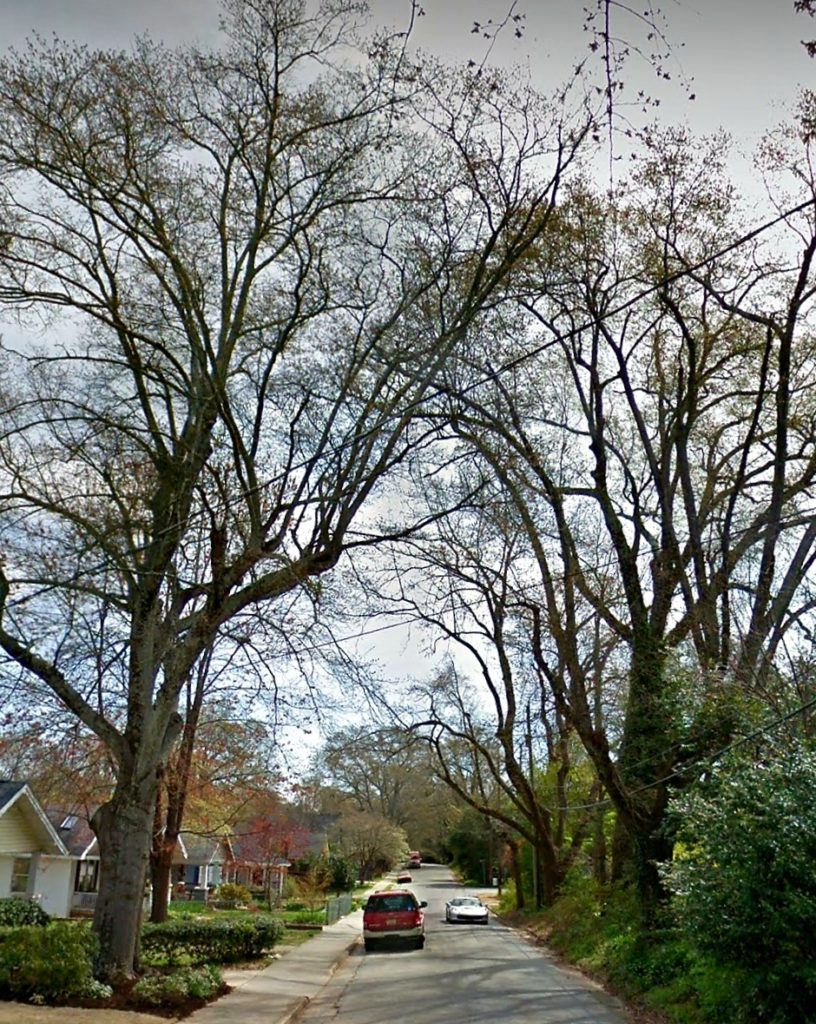
When the Garrauxs built their farm on what is currently Garraux Street (that runs from North Main to Bennett), the dirt road that was Greenville’s Main Street ended at about Stone Avenue. Elizabeth and Frederick Garraux cut in their own dirt road to their home and farm in the 1800s. It is likely they planted several of the large century oaks that still line the street. (Pictured above.)
The history of Greenville is intertwined with the lives of the Garraux family in my book, “When He Was Gone.” Looking at the city now and picturing it in the past has given me a deep appreciation for those who have gone before. It has also led me to fight for the preservation of Greenville’s trees.
The following piece about the city’s trees was printed in the Greenville Civic and Commercial Journal in December 1921:
“While spreading the righteous boast that Greenville is the Pride of the Piedmont and the Textile Center of the South, it might be well for all Greenville Citizens to pause for a moment to consider some phases of the city’s advantages which, through common and seemingly of small importance to us because we are accustomed to them, will be of great interest to the main in other cities and sections who are watching Greenville grow and who may someday join us as citizens of the ‘biggest little city in the world.’
“For instance, perhaps no other city of this size in America has so many beautiful shade trees as has Greenville. Most of them are sturdy oaks, and there is more than one tree for every man, woman and child in Greenville. Does that sound impressive? Look around and count them!
“There’s hardly a residence in the entire city that is not surrounded with splendid trees. Here we have a city and a forest, a beautiful city and a beautiful forest. Perhaps the fact that ours is the healthiest city in the South is due in measure to the health giving forest in which we dwell.
“A great many of the trees here were planted by nature and are beautiful in their irregular positions, but along a number of streets there are unmistakable proofs that many of them were planted in regular rows years ago by those who had an eye for the beautiful, a vision of the future, and a desire to do their bit for Greenville.”
Like
Comment
Share
